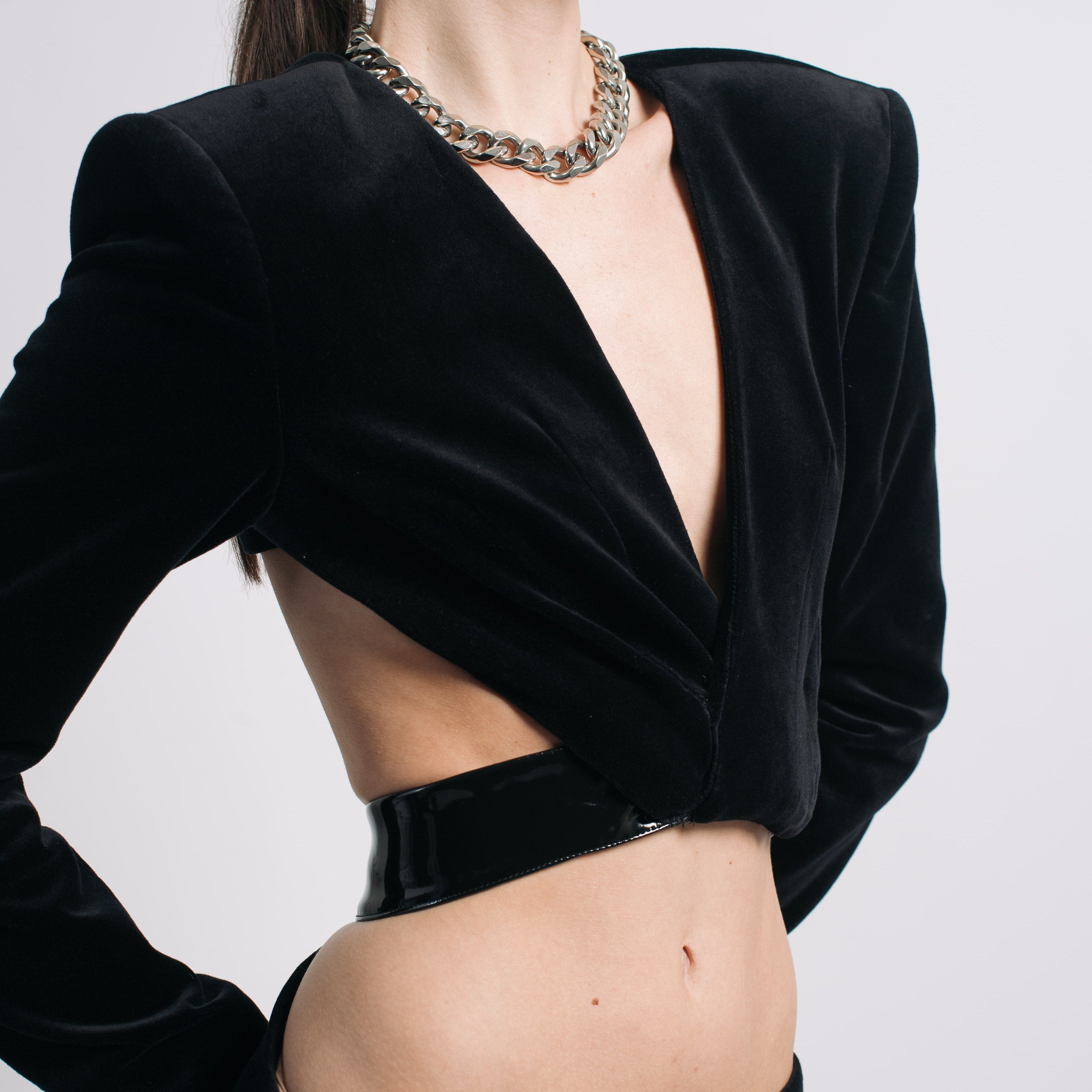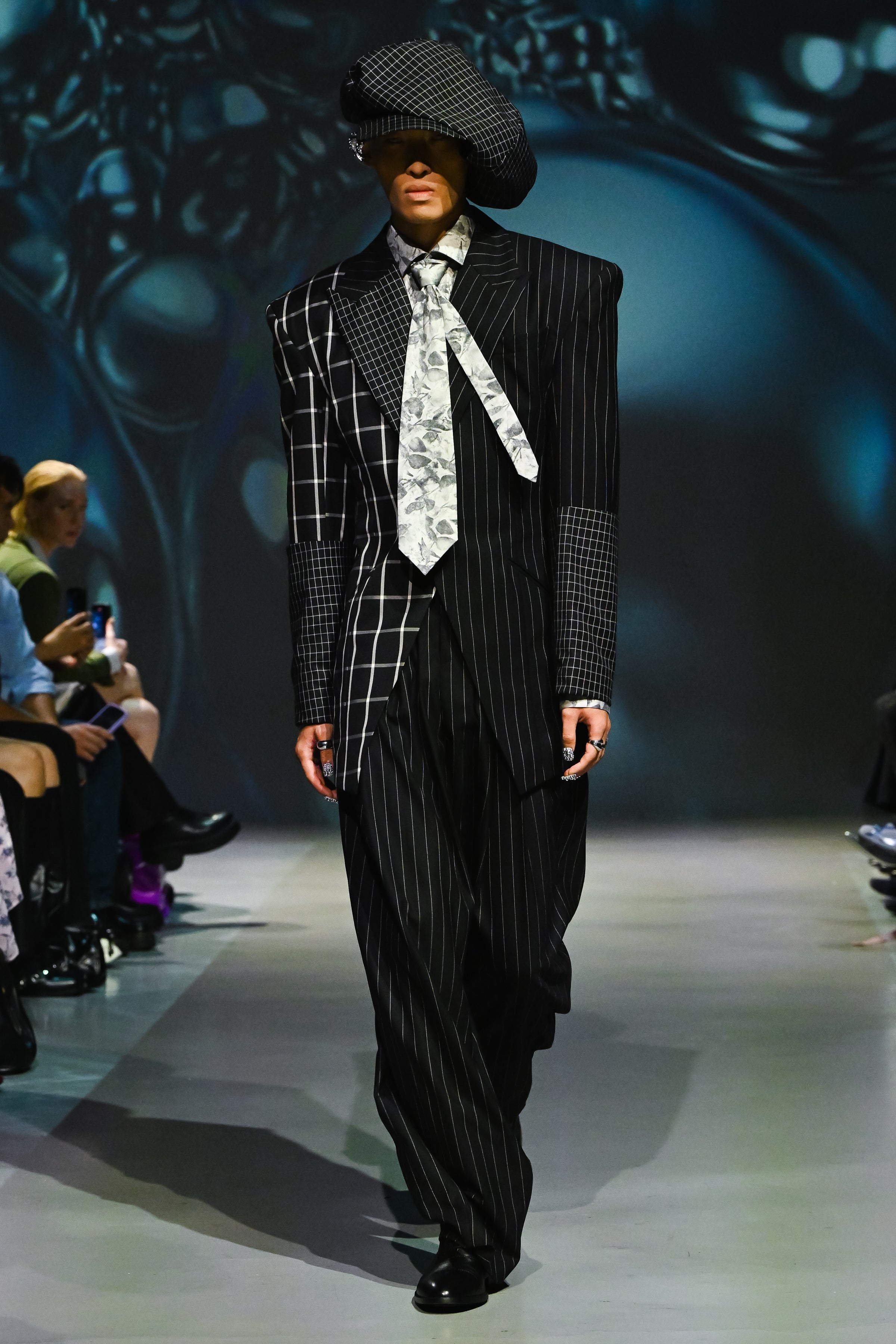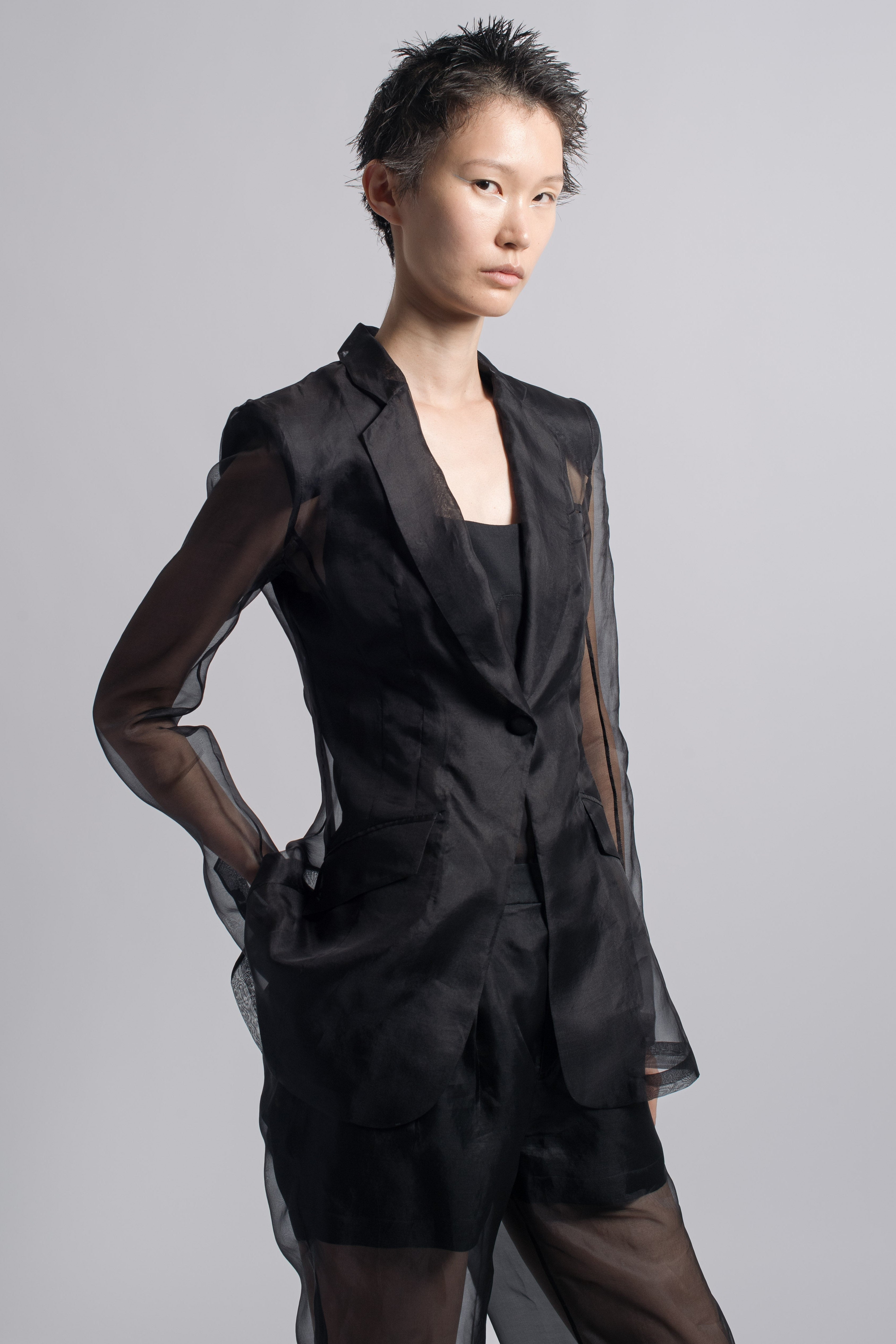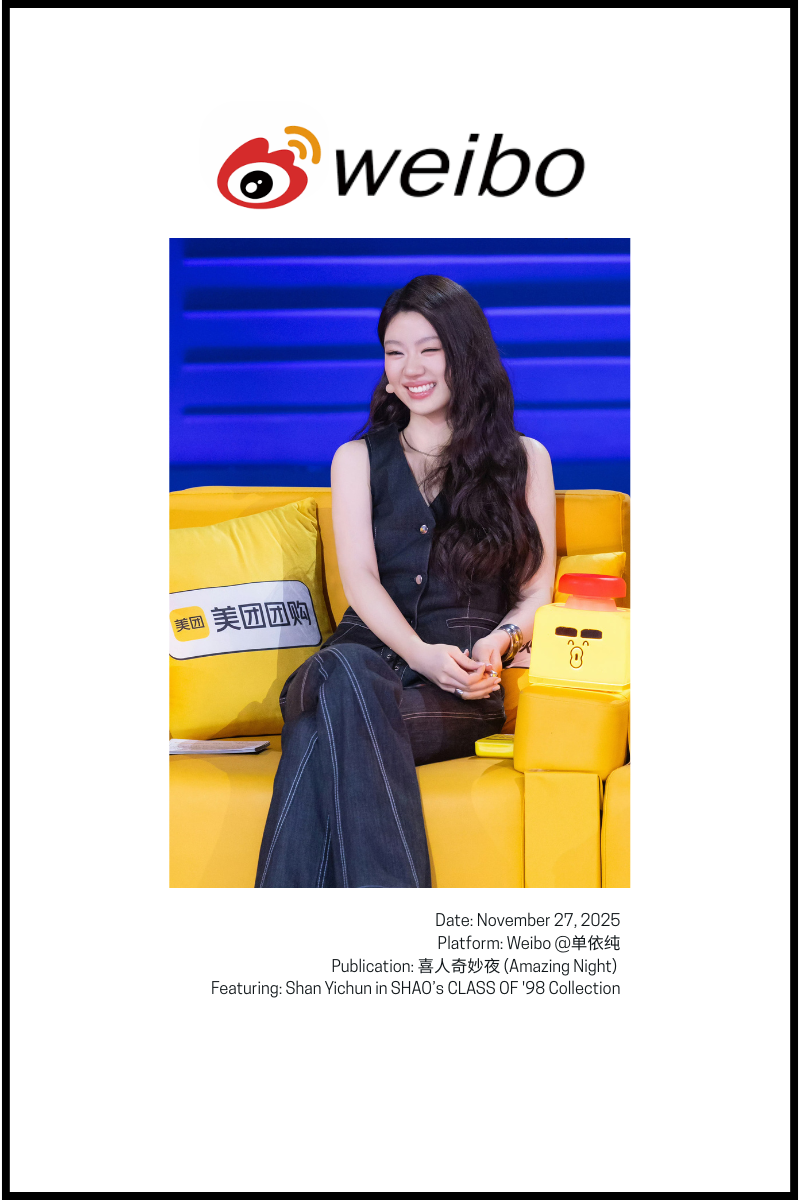Yu Nan's appearance in V Magazine China wearing SHAO's Tourmaline Pink Cropped Leather Jacket isn't just another celebrity fashion moment. It's a cultural thesis statement wrapped in leather.
The actress, known for her work in both Chinese cinema and Hollywood productions like The Expendables 2 and Speed Racer, embodies exactly the kind of cultural fluency that SHAO's design philosophy was built to address. Her choice to wear this particular piece speaks to something larger than simple styling.
Cropped Leather's Cultural Geography
The cropped leather jacket occupies specific territory in fashion's vocabulary—simultaneously rebellious and refined, street-level and high-fashion.
SHAO's interpretation for the Shanghai 1930s Collection takes that inherent duality and pushes it further. The brand acknowledges that the cropped leather jacket's evolution from motorcycle gear to fashion staple mirrors larger stories about how working-class utility gets absorbed, transformed, and reimagined through luxury fashion's lens.
But where most designers either play up the rebellion or sanitize it into something safe for department store consumption, SHAO maintains both edges simultaneously.
The construction details matter here. Leather jackets live or die on how they handle proportion—how the crop hits the body, where the sleeves end, how the collar frames the face.
The Shanghai 1930s reference isn't arbitrary nostalgia. That era sits at one of fashion history's most fascinating crossroads—when East met West in Shanghai's international settlement, when Chinese women were cutting their hair short and wearing qipaos with heels, when jazz clubs and opium dens existed on the same streets as traditional tea houses, when modernity and tradition negotiated terms in real time through clothing choices.
Hollywood Meets Shanghai
Yu Nan's career trajectory itself reads like a case study in the cultural navigation that SHAO's design philosophy addresses.
She's worked with Sylvester Stallone and Wayne Wang. Appeared in Chinese art house cinema and Hollywood action franchises. Maintained credibility in both markets without becoming a caricature in either.
That kind of cultural code-switching requires intelligence, strategy, and the ability to maintain authenticity while shifting contexts—exactly what SHAO's approach to fashion synthesis attempts to achieve through design rather than compromise.
When she chooses to wear SHAO's Tourmaline Pink Cropped Leather Jacket for a V Magazine China feature, she's making a statement about what contemporary Chinese fashion representation looks like when it refuses simplistic narratives.
Not the qipao cosplay that Western fashion magazines used to rely on for their "exotic Asia" shoots. Not the hypebeast streetwear that sometimes feels like cultural ventriloquism. Something that acknowledges both Chinese cultural heritage and global contemporary fashion language without performing for either audience's expectations.
Shanghai 1930s as Design Philosophy
The Shanghai 1930s Collection's entire premise rests on this kind of cultural synthesis—taking the aesthetic vocabulary of that transformative decade and filtering it through contemporary design sensibility that never forgot its origins.
Shanghai in the 1930s was China's most cosmopolitan city, a place where traditional Chinese culture collided with Western modernity in ways that produced entirely new forms of expression. Women wore qipaos tailored with Western construction techniques. Jazz standards got reinterpreted through Chinese instrumentation. Architecture blended Art Deco geometry with Chinese decorative elements.
SHAO's collection channels that same synthesis energy—fashion that understands cultural identity isn't about choosing between heritage and modernity but about finding the intersection that honors both without getting trapped in either's most limiting expectations.
The cropped leather jacket becomes the perfect vehicle for this exploration. Leather jackets didn't exist in 1930s Shanghai's fashion vocabulary, but the spirit of cultural experimentation, the willingness to take Western garment forms and make them serve Chinese aesthetic purposes, the confidence to navigate multiple cultural influences simultaneously—that existed in abundance.
EXPORE: Shanghai 1930' Collection
Cultural Synthesis in Action
What Yu Nan wearing this piece demonstrates is how SHAO's cultural synthesis approach functions in practice rather than just theory.
It's one thing to talk about bridging Eastern and Western fashion vocabularies, honoring heritage while remaining contemporary, refusing to perform for external expectations. It's another thing entirely to create garments that actually achieve that synthesis in ways that resonate with people who understand both cultural contexts intimately rather than as tourist experience.
The Shanghai 1930s Collection works because it doesn't try to explain itself. Doesn't include didactic cultural references that perform their own significance.
Instead, it assumes a viewer who understands that cultural identity exists in the synthesis rather than the separation. Who recognizes that authenticity isn't about purity but about honest navigation of multiple cultural influences.
Yu Nan gets that implicitly—her entire career demonstrates it. The fact that she chooses SHAO for this V Magazine China feature suggests she recognizes the design philosophy behind the garment, not just its surface aesthetic appeal.
















